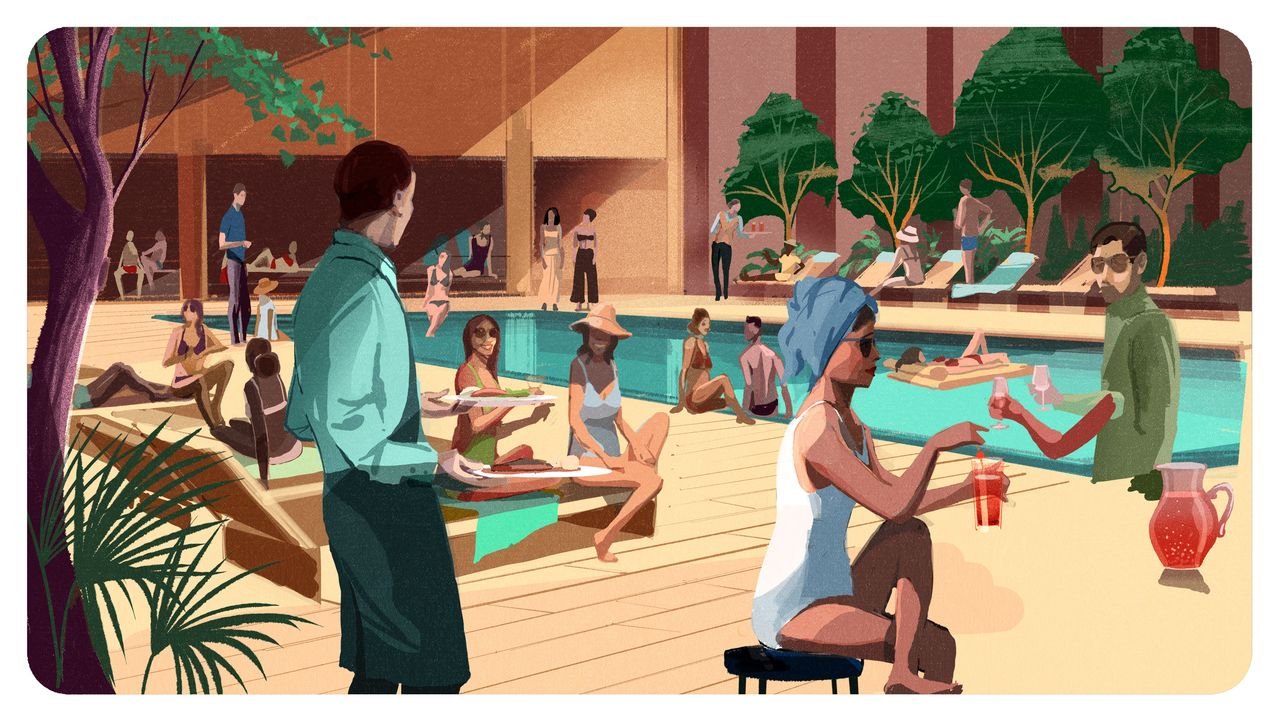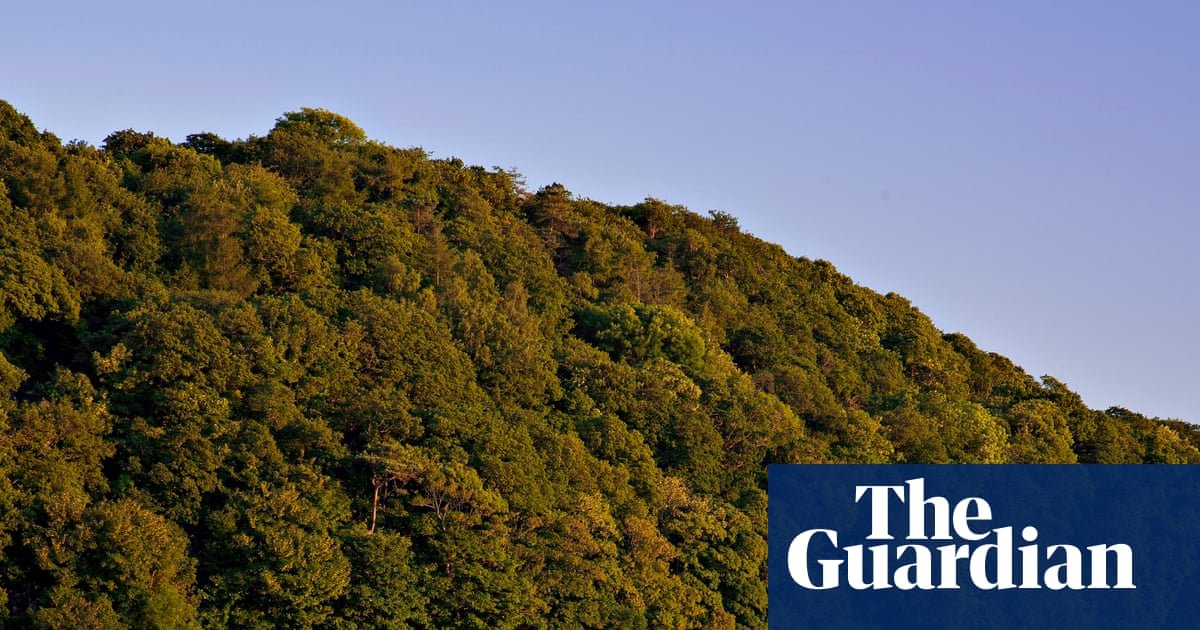Solo Travellers
The Extravagant Rise of the Corporate Incentive Trip

This story is part of The New Era of Work Travel, a collaboration between the editors of Condé Nast Traveler and WIRED to help you navigate the perks and pitfalls of the modern business trip.
Business travel doesn’t typically conjure up the most glamorous images: working group sessions in overlit conference rooms, awkward dinners with coworkers at unmemorable chain restaurants. But for some lucky employees, there’s a special subset of work travel that isn’t just something to look forward to but something to fight for: the corporate incentive trip.
Mark*, a former sales director at Linkedin, is a frequent flyer in the world of corporate incentive travel, wherein companies motivate employees to crush their sales goals with the promise of all-expenses-paid stays at luxury hotels and bucket-list sightseeing experiences. He has qualified for seven or eight such trips awarded to the company’s top performers, including one to the Four Seasons Resort Peninsula Papagayo in Costa Rica and another to the Apurva Kempinski in Bali. “It kind of ruined travel for my wife and I, because we’ve now gone on so many of these trips that we know that these places exist,” he says.
His company typically buys out the entire hotel—often a Four Seasons—for thousands of top performers, who are each invited to bring along the one person they feel has most contributed to their success. (Mark, a smart man, generally brings his wife.) While there’s usually a few hours of meetings or talks one morning, the rest is actual, genuine fun: Mark remembers being skeptical of a “white party” on the beach in Costa Rica, before it ended up turning into a huge rave, with everyone covering their face in neon paint and dancing until the wee hours. “It was probably one of the more fun parties I’ve ever attended,” he says.
Corporate reward or incentive travel is a common motivational tool in sales-focused jobs, particularly in the finance, insurance, pharma, and auto industries. (MLMs love them too.) It’s also a mainstay at big tech companies like Microsoft and Salesforce, the latter of which hosted Katy Perry for a private performance on its 2022 President’s Club trip to Hawaii’s Mauna Lani, an Auberge resort. In 2014 a report by the Incentive Research Federation showed US businesses had spent over $22 billion on incentive travel, and 46% of companies surveyed relied on it as a reward for top performers, with sales programs using it the most. (A 2022 follow-up study correctly predicted incentive spending would go on to grow substantially across the board.) In the past few years, as the world reopened after the height of the pandemic and tourism skyrocketed, these trips have become increasingly opulent and bespoke, with companies vying to outdo one another with five-star extravaganzas that most employees might never experience outside of their honeymoons or that one bougie friend’s destination wedding—if that.
Alex Green
“After COVID, things went crazy,” says Sean Hoff, the founder of Moniker Partners, a corporate-retreat-planning agency based in Toronto. Companies that had once brought top employees to nearby locations like New York City or Miami were suddenly asking him to plan excursions to Asia or the Middle East. Many of Hoff’s clients are real estate developers or brokerages based in Canada, and as the market boomed, “it almost became like a mini arms race, where different builders were trying to compete for who could offer the most incredible trip,” he says.
Solo Travellers
Affluent Travelers Are Sticking Closer to Home, but Still Crave Bucket List Experiences

A new travel trends report for luxury specialist Kensington has revealed some unexpected developments in consumer behavior among affluent travelers.
Kensington, which underwent a rebrand this past November, released its annual trends report in December. That initial report found that luxury travel remained resilient and experience-driven, and identified trends such as a resurgence of solo travel.
The latest research from Kensington demonstrates how quickly luxury travel motivations evolve. Titled Navigating Uncertainty in Affluent Travel, Kensington’s 2025 mid-year travel trends report, provides a snapshot of the luxury travel sector, relying on information from booking patterns, proprietary data, and an updated Affluent Traveler Survey, which was conducted in partnership with Dig Insights in June 2025.
Kensington identified three major trends in the survey results: that Americans are traveling closer to home, that affluent travlers still want “once-in-a-lifetime” experiences, and that demand for Africa is growing—and it’s not just for game safaris.
“We’re in a moment where global unpredictability is testing assumptions across the industry,” said Matt Cammaert, senior vice president of marketing and outside sales. “And yet, the data tells a story of travelers who are adapting, not retreating. These shifts aren’t just reactive; they’re purposeful. Whether it’s staying closer to home or seeking out deeper experiences abroad, today’s traveler is making intentional choices.”
Increase in Domestic Travel
Geopolitical concerns and a weakening U.S. dollar have led to an increased interest in North America travel this summer. Roughly half of affluent travelers surveyed stated that they haven’t changed their travel habits; however, Kensington’s internal data tells a different story: U.S.-based trips are up 60% year-over-year, and shorter-duration itineraries now account for more than 9% of 2025 bookings.
“It’s not just about proximity, but about control,” added Cammaert. “The domestic segment is growing because it meets today’s traveler where they are. They want high-end, high-touch experiences, but they also want to reduce friction.”
Bookings for the Ultra-Luxe Segment Are Up
Despite ongoing global uncertainties, luxury travelers remain focused on securing unforgettable, once-in-a-lifetime experiences. Bookings in the ultra-luxe category ($2,000 to $3,000+ per person, per day) are up 47%, with strong demand for private yachts, luxury villas, and VIP access to exclusive events.
According to Kensington’s survey, 56% of affluent travelers plan to increase their leisure travel spending this year, while 36% say they’re allocating more specifically for VIP-style experiences. Bookings in the highest tier, $,3000+ per person per day increased by 63.8%. Kensington Yachts also saw a 94% year-over-year growth in yacht charter sales.
“The needs of high-net-worth travelers aren’t typically impacted by the short-term economic changes that affect other parts of the market,” said Edita Sgovio, vice president Kensington Yachts & Expeditions. “Their expectations are high, and they want experiences they can tell stories about – even boast about. They want to make lasting memories and will be loyal to travel brands that deliver on those high expectations.”
Shifts in Africa Luxury Travel
Africa’s allure continues to grow—though the nature of that interest is beginning to evolve. While classic game drives remain a major draw, affluent American travelers are increasingly seeking a broader, more immersive experience of the continent’s landscapes, history, and cultures.
Safaris still represent a key growth engine, with Kensington reporting a 54% year-over-year increase in African safari bookings during Q1 of 2025. The surge is particularly strong in emerging destinations like Zimbabwe (up 75%), Zambia (up a staggering 397%), and East African staples like Kenya and Tanzania (up 43%). Even South Africa—long a safari mainstay—has seen a 71% bump over 2024.
But the shift lies in what travelers want beyond the Big Five. According to Kensington’s Affluent Traveler Survey, high-net-worth clients are showing growing interest in cultural and historical explorations: guided tours of historic cities, immersive visits to local villages, and wildlife experiences that go beyond the traditional safari. This new wave of demand reflects a deeper curiosity about Africa’s rich diversity—both human and ecological.
Solo Travellers
Safaris aren’t just for newlyweds and families. Here’s what it’s like to go alone
Safaris are a bit like grown-up summer camps and the number of solo travellers has been steadily, if quietly, growing.Supplied
“You’re here by yourself?” The taxi driver sounded surprised. Or, perhaps, simply unused to ferrying lone, middle-aged women to Tanzania’s Kilimanjaro International Airport, where I planned to hop a propeller plane to a dirt airstrip in the middle of the country’s vast savannah.
I’m married (happily); I have friends (I swear). Yet going on safari alone intrigued me, because even as solo travel has soared in popularity, safaris retain their reputation as the realm of families and honeymooners. I wondered what it would be like to experience one of the world’s wildest places by myself – and had recently learned that the number of solo safari-goers has been steadily, if quietly, growing.
“It’s definitely a trend we’re seeing,” said Monique Langue, a safari expert with go2Africa from Cape Town, South Africa. In 2024, around 13 per cent of the company’s travellers were on their own, an 8-per-cent increase from the previous year. The trips aren’t just for loners, Langue said. “You can be a solo traveller, join a small group and meet some new people,” she said. “But for others, travelling alone is really about that experience of a solo trip.”
I was invited to discover two of Africa’s top safari camps in both price and guest experience – and so planned a two-part solo trip encompassing both sides of the wildlife-rich Mara–Serengeti ecosystem that spans the border between Kenya and Tanzania. First, a stay at Singita Grumeti in Tanzania’s 350,000-acre Grumeti Game Reserve. Next, I’d fly to Maasai Mara National Reserve, in Kenya, where I’d be sleeping in one of the well-appointed, canvas-sided tents at andBeyond Bateleur Camp.
The suite at the Singita Faru Faru lodge overlooks the roiling Grumeti River.Supplied
“What do you most want to see? What we do is totally up to you,” said Grumeti safari guide David Mnazi, when my plane touched down at the reserve’s private airstrip. If solo trips can occasionally leave travellers feeling at loose ends, I quickly found that, with their activity-packed schedules, safaris are a bit like grown-up summer camp.
During my stay at Grumeti, Mnazi would be my guide for twice-daily game drives, designed to catch the morning and evening hours when animals are most active. Within minutes of leaving the airstrip, we’d seen the lilac-breasted roller – a flamboyantly coloured bird – followed by warthogs snacking on grass in a gossipy knot. I relished the flexibility that the solo drives gave me. At times, I chose low-key birdwatching feet from the lodge; another day, we decided to cross the reserve in pursuit of a pride of lions, who we found drowsing in the thorny crowns of acacia trees.
In the heat of the day, I retreated to the Singita Faru Faru lodge, where my suite overlooked the roiling Grumeti River. I savoured the long afternoons: my netting-swathed bed hinted at indulgent naps, while a watercolour painting set invited creative interludes. The minibar bar was stocked with chilled South African chenin blanc. Tucked in the corner was a cork yoga mat that I pulled out each day, spreading it on my veranda and following the step-by-step mindfulness meditation instructions set thoughtfully alongside.
In 2024, around 13 per cent of safari company Go2Africa’s travellers were on their own, an 8 per cent increase from the previous year.andBeyond Bateleur
Many solo safari trips, like mine, come with hefty single supplement fees that may explain the relative rarity of going it alone. That may be changing. At Singita, where a week-long safari costs as much as a compact car, lone travellers aren’t charged more. Meanwhile, andBeyond waives their 50 per cent single supplement fee during two low seasons, from mid-January through April plus November through late December.
“Camps and lodges are starting to see the value in being a little more flexible when it comes to solo travellers,” Langue said. It takes some looking, she acknowledged, but noted that going in the rainy season, as I did, makes such deals easier to find. In quiet periods, she’s had success negotiating down single supplements even when they’re listed in the official rates. Flights are more affordable in the low season, too. Visitors to remote lodges might even find themselves alone on the plane, as I did on an early morning flight to the second game reserve on my safari itinerary.
“Welcome to your private plane,” said the co-pilot, from the open cockpit of the twin-engine propeller AirKenya flight from Nairobi’s Wilson Airport. “Next stop, Maasai Mara National Reserve.” A veteran andBeyond guide, Wilson Omari, greeted me on the ground with a flute of Champagne, and promptly steered me past a herd of surly-faced buffalo.
Kenya’s Maasai Mara National Reserve as seen from andBeyond’s Bateleur Camp.andBeyond Bateleur
Our first official game drive wouldn’t begin until later that day, when we’d go out in search of the black rhino who’d recently been spotted with her young calf. (When we found them, looking placid and alien at the forest’s edge, I squealed in undignified delight but with no other guests nearby to laugh, who cares?).
Until then, I’d luxuriate in a tent that stretched the meaning of the word to its breaking point. At its centre was a plush, leather-trimmed bed with room for a crowd. Its gin bar, cut-glass sherry decanter and vast copper bathtub seemed especially decadent when paired with views of giraffes wandering nearby grassland – explorer-inspired romance upholstered with cheekily Victorian creature comforts.
andBeyond supports a rewilding project with a tree nursery that provides seedlings to the surrounding villages.Supplied
One morning, I skipped my game drive to join Simon Saitoti, andBeyond’s community and impact officer, for a hike through nearby Nyekweri forest, which provides critical habitat for animals, including the endangered giant pangolin, but has faced rapid deforestation.
Saitoti, a Maasai elder, helps oversee the andBeyond-supported rewilding project currently restoring it, with a tree nursery providing seedlings to the surrounding villages. As we searched for pangolin tracks amid shady groves of wild olives and black ironwood trees, he explained that the forest has exceptional environmental significance, but also a cultural one.
“This is where young Maasai men become warriors,” he said. “When I was a young man, I spent a month in this forest, with no clothes, eating nothing but beef and herbs . . . men from the village came to me, and spoke words to change my heart and make me brave.” Such traditions depended on the forest’s ongoing existence – Saitoti saw his people’s future entwined with that of the ecosystem he was working to protect.
Many solo safari trips feature a hefty single supplement fee, but that may be changing.Supplied
On my last game drive at the camp, I was joined by newlyweds Maddie and Sachin Verma – beatific and just a week past their vows.
Together, we watched a family of elephants clustering around a tiny calf, and sipped cocktails on a bluff high above the Maasai Mara at sunset.
“Would you like to join us for dinner?” Sachin asked, graciously, when we returned to camp. “No thanks,” I replied. “It’s my last night, and I think I’d like to eat alone.”
The Singita Faru Faru Lodge boasts a minibar stocked with chilled South African chenin blanc and even a cork yoga mat.Supplied
If you go
All-inclusive safaris at Singita Grumeti Faru Faru start $2,963 a person per night, includes meals, accommodation, two daily game drives, transfers to the airstrip and excellent service. For more, visit singita.com
All-inclusive stays in luxury tents at andBeyond Bateleur camp start at $1,687 per person per night, single supplement waived during low season. Includes meals, accommodation, safari activities, laundry, airport transfers. For more, visit singita.com or andbeyond.com.
Lone travellers aren’t charged more at Singita, while andBeyond waives their 50 per cent single supplement fee during two low seasons, from mid-January through April plus November through late December.Supplied
Special to The Globe and Mail
The writer was a guest of Singita Grumeti and andBeyond Bateleur Camp. They did not review or approve the story before publication.
Solo Travellers
Where tourists seldom tread, part 18: three seaside towns that defy the tides of fashion | United Kingdom holidays

Tis the season to be beside the seaside – and to hype and critique coastal towns in surveys and rankings. I suppose lists of this year’s “in” and “out” resorts help tourists decide where to go; no point going to Skegness for Michelin-starred food, or to Salcombe for a laugh and cheap beer. Less obvious coastal towns provide more nuanced fare. Perhaps the most alluring spots are those where we don’t forget the sea. These three towns are routinely ranked last resorts or else ignored altogether, but they offer more than stuff to eat, drink, buy and post on socials – and are close to swimmable beaches.
Ayr, Ayrshire
A century ago, Clyde steamers and the Glasgow and South Western Railway took thousands of sunseekers from inland towns to the Ayrshire coast. They came to escape the smoke and noise of industry, breathe in the briny air, and admire the Isle of Arran and tiny Ailsa Craig – from afar or up close on an excursion. The bed and breakfasts on elegant Park Circus (a sweeping crescent lined with cherry trees that blossom red on one side and white on the other) and the Georgian villas on Eglinton Terrace evoke something of the golden days of yore.
It’s easy to imagine parasol-sporting ladies and tall-hatted gents strolling across the Low Green, a large field between the town centre and the beach. This open space – perfect for picnics, kite-flying and impromptu games – and the absence of any clutter on the prom make the seafront unusually peaceful. It’s as if Ayr has refused to become a traditional resort. No tat, no tack, not many tourists. There are places to play on swings and get an ice-cream or a pint, but lovers of amusement arcades and bucket-and-spade shops should probably stay away. On the short block beside the Low Green the buildings are mainly residential – including care homes, that standard fixture of coastal towns.
The beach is a golden sweep about two miles in length, with the old harbour at the north end. Wharves and quays once bustled all along the River Ayr. By the 14th century, this was Scotland’s principal west coast port. In the 18th century, more than 300 ships were moored every year, unloading American tobacco, French wine, Spanish salt, English earthenware and slate from Easdale in the Firth of Lorn. Walk south and you come to the ruins of Greenan Castle, a 16th-century clifftop tower. The sunsets over Arran are life-enhancing. I watched a woman of retirement age do her tai chi moves while keeping her eyes fixed on the island – spiritually separate from the dog-walkers and prom-striders.
Robert Burns was born near Ayr and baptised in the Auld Kirk. In Tam o’ Shanter he writes: “Auld Ayr, wham ne’er a town surpasses, / For honest men and bonny lasses”. A lively pub on the high street, which is set back a good mile from the beach, is named after the poem; it claims to be the oldest in Ayr, but so does the Black Bull on the opposite side of the river. The old bridge (or Auld Brig, if you prefer, which inspired another Burns poem) that takes you across is pedestrianised and a beauty. All the old pubs are enticing but I had my most enjoyable, peaceful beer and dram in the Twa Dugs – also named for a Burns poem. In Ayr’s Waterstones, I found a long-overlooked 1969 Booker-nominated novel by Gordon M Williams, From Scenes Like These, that provided a brutally realistic riposte to Burns-esque takes on rural Scotland. I read it in the boozers, the caffs, on benches.
People in Ayr will tell you the town has declined. They’ll tell you that in nine out of 10 seaside resorts. But this column gets me around, and I can vouch for the town’s general busyness and good looks. Sedate, somewhat stern, bereft of traditional fun stuff, it’s an ideal hideaway for those who want to do beach walks, read or write, and check into small, friendly guest houses.
Things to see and do: Rozelle House Museum, Robert Burns Birthplace Museum, Culzean Castle and Country Park
Bangor, Gwynedd
Bangor, the oldest city in Wales, came second from bottom in the Which? 2025 rankings and absolute bottom in 2024. Perhaps the latter partly anticipated the former. Casually saddle a place with derision and it takes a great effort to shake it off.
As the gateway to the island of Ynys Môn (Anglesey), a university town and former royal capital, Bangor doesn’t need star ratings or hip amenities. The city’s origins stretch back to the founding of a monastery in the early sixth century. A cathedral was later built on the site. For centuries, Bangor was the spiritual and ecclesiastical hub for Gwynedd – a kingdom until the English came a-conquering – but remained a small settlement. Nonetheless, during the first flush of Welsh tourism, at the turn of the 18th and 19th centuries, pleasure steamers from Liverpool brought visitors to see the big church and the wild waters of the Menai Strait.
The boom years came after 1826 with the completion of the Holyhead Road, linking London with Dublin – hitched to the recently created UK by the 1800 Acts of Union. The first major civilian state-funded road building project in Britain since the Roman era, the job was given to Thomas Telford. The road (much of it on the same route as today’s A5) swept through central Bangor, making the former big village a major staging post, and creating the longest high street in Wales. To replace the ferry-shuttles, Telford’s magnificent Menai Suspension Bridge opened in 1826. Two decades later, Robert Stephenson built a tubular bridge to carry the Chester-Holyhead railway across the straits. With communications much improved, Bangor became a proper little port, with shipbuilding, sail making, iron founding, smithing and timber yards, as well as slate yards.
Walk to the natural end of this high street – which turns residential – and you come to the shore, a pier and a large park between neo-Norman Penrhyn Castle and the sea. You don’t have an in-town beach, which might be why some of the raters have a low opinion of Bangor. But the Wales Coast Path and the railway line link Bangor with beaches at Llanfairfechan and Penmaenmawr, eight and 10 miles away respectively. In fact, this might be the best-connected seaside town in the UK, with Eryri national park (Snowdonia), Unesco-listed Caernarfon Castle and Criccieth and the Llŷn peninsula accessible by bus, and of course Anglesey on the doorstep.
Things to see and do: walk the Menai Suspension Bridge, kayaking off Caernarfon, Aber Falls Distillery
Millom, Cumbria
The Cumbrian coast is the most intriguing stretch of littoral in these islands. Backed by the towering, cloud-drawing fells of the national park, the shore is often beneath a blue dome. The towns along it are chapters in British social history. Whitehaven is like a Devon port town without the crowds. Workington is a fascinating ex-industrial town. Nethertown is a hidden hamlet in a spectacular setting.
Millom, at the southern tip of the old county of Cumberland, is a stop on the coast-hugging railway line – a superlative train ride – between Barrow-in-Furness and Sellafield. Its main connection to the nexuses of nuclear war and power are the Millomites who commute south and north for work. Millom once had industry; hematite ore (iron oxide) was found at Hodbarrow in 1856 and mined till 1968, the population swelling to 10,000. Much of the land was transformed into an RSPB nature reserve, centred on the north-west’s largest coastal lagoon; little, common and sandwich terns breed on the islands and you can see ringed plovers, redshanks, great crested grebes and oystercatchers around the wetlands.
Millom is tiny, but has none of the jams and crowds of the villages in the nearby Lakes. The Camra-rated Bear on the Square has real ales, good food and live music. The town has its own fell – Black Combe – and while only a 600-metre Marilyn, its isolation and proximity to the sea make it feel higher. The views from the summit are magnificent – with Blackpool Tower and Scafell Pike visible in clear weather.
The poet Norman Nicholson (1914-1987) was born in Millom and spent almost all his life here, shunning metropolitan literary circles and asserting that the much-maligned “provincial” has more in common with people of other times and lands and consequently “may be all the more aware of that which is enduring in life and society”. The titles of his books reflect the locale: Rock Face (1948); The Shadow of Black Combe (1978); Sea to the West (1981). St George’s church has a stained-glass window designed by Christine Boyce that was inspired by Nicholson’s writing. His house is being restored, while Millom as a whole is undergoing a major rebuild with heritage and health projects afoot as well as a 7.5-mile walking and cycling trail.
For a swim, head to Silecroft by train (one stop) or on foot (3.5 miles); Haverigg beach, though closer, often has pollution warnings.
Things to see and do: Millom Heritage and Arts Centre, Swinside Stone Circle
Further information: Visit Scotland, Visit Cumbria and Visit Wales
-

 Brand Stories2 weeks ago
Brand Stories2 weeks agoBloom Hotels: A Modern Vision of Hospitality Redefining Travel
-

 Brand Stories2 weeks ago
Brand Stories2 weeks agoCheQin.ai sets a new standard for hotel booking with its AI capabilities: empowering travellers to bargain, choose the best, and book with clarity.
-

 Destinations & Things To Do3 weeks ago
Destinations & Things To Do3 weeks agoUntouched Destinations: Stunning Hidden Gems You Must Visit
-

 Destinations & Things To Do2 weeks ago
Destinations & Things To Do2 weeks agoThis Hidden Beach in India Glows at Night-But Only in One Secret Season
-

 AI in Travel3 weeks ago
AI in Travel3 weeks agoAI Travel Revolution: Must-Have Guide to the Best Experience
-

 Brand Stories1 month ago
Brand Stories1 month agoVoice AI Startup ElevenLabs Plans to Add Hubs Around the World
-

 Brand Stories4 weeks ago
Brand Stories4 weeks agoHow Elon Musk’s rogue Grok chatbot became a cautionary AI tale
-

 Brand Stories2 weeks ago
Brand Stories2 weeks agoContactless Hospitality: Why Remote Management Technology Is Key to Seamless Guest Experiences
-

 Asia Travel Pulse1 month ago
Asia Travel Pulse1 month agoLooking For Adventure In Asia? Here Are 7 Epic Destinations You Need To Experience At Least Once – Zee News
-

 AI in Travel1 month ago
AI in Travel1 month ago‘Will AI take my job?’ A trip to a Beijing fortune-telling bar to see what lies ahead | China











You must be logged in to post a comment Login